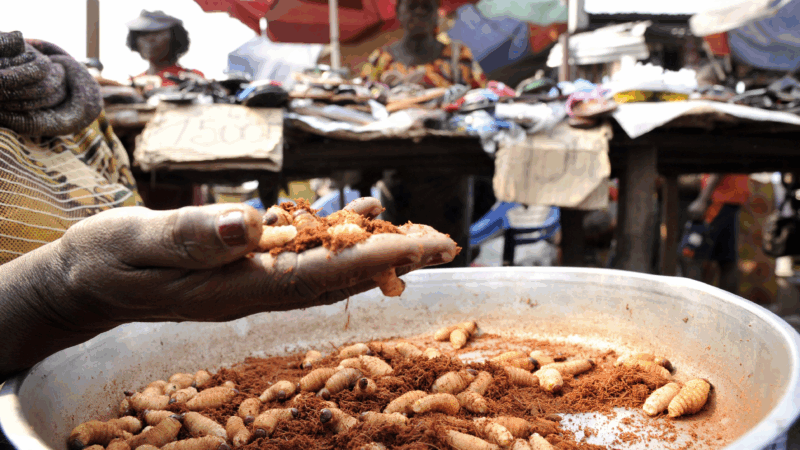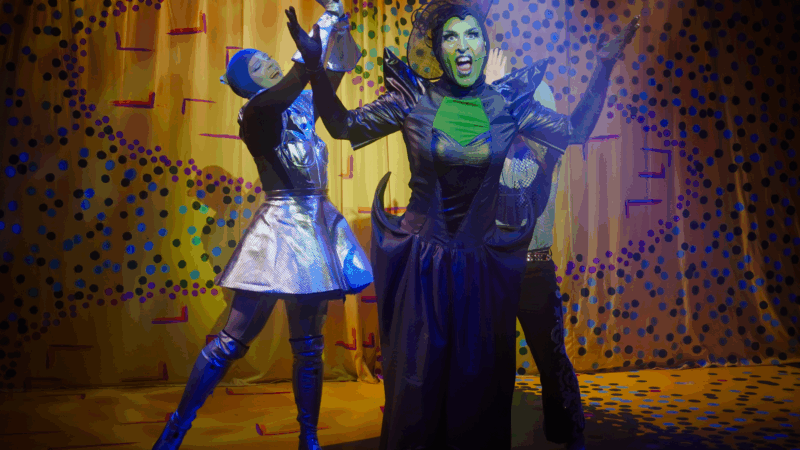‘You’ll have a long life’: In DR Congo, maggots and caterpillars are prized food
KINSHASA, Democratic Republic of Congo — They’re tastier than they look. Edible insects in the form of wriggling maggots or hairy caterpillars are both delicacy and staple in the Democratic Republic of Congo (DRC), a central African nation of nearly 120 million people.
In markets in the capital Kinshasa, tubs full of writhing white maggots line the alleyways, and women traders fry caterpillars, spiced with chili, over charcoal fires. “The more you eat caterpillars, the more you’ll have a long life,” says Trésor Kisanbu, clutching a small plastic bag of fried caterpillars, in Kinshasa’s largest market, Marché Liberté. “It strengthens your muscles and your eyes, it’s really organic,” he adds.
Villagers harvest fresh caterpillars and maggots from rotting tree trunks in forested areas in the Congolese interior. From there, they’re sent by the boatload down the Congo River — the second-largest in Africa — for sale in Kinshasa’s markets.
“People eat a lot of them,” says Mamman Coco, who runs a stall overflowing with piles of maize flour, dried beans and edible insects, in the center of Kinshasa’s sprawling central market.
She points to the caterpillars’ high protein and vitamin content as selling points, and the fact that they’re organic.

To taste, the caterpillars are earthy and bitter. Known as Mbinzo, in Kinshasa’s dominant language Lingala, the caterpillars are from a species of emperor moth.
They’re an expensive delicacy at about $200 a kilo, an enormous sum in a grindingly poor country where, according to the World Bank, two thirds of the population survive on under $2 a day.
Mpose is more popular fare. This is the Lingala term for the larvae of palm weevils, a type of beetle that lives in palm trees. They can be eaten with rice or fufu, a starchy staple, or as a crispy fried snack.
The larvae are mostly imported from rural areas too, but they can be raised commercially.
Congolese NGO Farms For Orphans raises Mpose maggots by the thousands to distribute to orphanages in Kinshasa, but it also sells its produce to market traders and Congolese émigrés nostalgic for a taste of home.
“In the DRC, meat products aren’t available to everyone,” explains Françoise Lukadi, the president of Farms for Orphans, because of their high cost. “If you buy very small quantities of insects, you gain more nutritional value than if you buy the same quantities of meat,” she says.
Eating insects is traditional in many parts of Congo. However, the practice isn’t common in all parts of the country. A huge state roughly the size of continental western Europe, Congo is extraordinarily diverse, with over 200 different ethnic groups and as many spoken languages.

Some research suggests that insect consumption has increased in recent decades. A 2023 study published in the journal Bois et Forêts des Tropiques found that in the Luki biosphere reserve about 250 miles southwest of Kinshasa, in western Congo, villagers only began to eat insects in the late 1970s.
According to the lead researcher Ernestine Lonpi Tipi, that period coincided with drought and the gradual degradation of forests, and subsequent scarcity of bushmeat. Then, back-to-back civil wars in the 1990s and 2000s cratered the economy.
Lonpi Tipi added that domesticating larvae production ultimately would lead to solving problems related to access to protein- and nutrition-rich food.
Françoise Lukadi of Farms for Orphans agrees. In a low rectangular building in Kinshasa’s main university, shelves are stacked with plastic tubs of palm weevils. Workers clean out the tubs and add in new food for the maggots: pieces of palm bark and organic waste from beer production.
Farms for Orphans produces about 300 kilos of maggots a month and it’s looking to expand production.
“They’re very good to eat,” Lukadi said, but she admitted that even in Congo, where people consume insects regularly, many are still squeamish.
Jeffrey R. Holland, next in line to lead Church of Jesus Christ of Latter-day Saints, dies at 85
Jeffrey R. Holland led the Quorum of the Twelve Apostles, a key governing body. He was next in line to become the church's president.
Winter storm brings heavy snow and ice to busy holiday travel weekend
A powerful winter storm is impacting parts of the U.S. with major snowfall, ice, and below zero wind chills. The conditions are disrupting holiday travel and could last through next week.
Disability rights advocate Bob Kafka dead at 79
Bob Kafka was an organizer with ADAPT (American Disabled for Attendant Programs Today), a group which advocates for policy change to support people with disabilities.
‘It’s behind you!’ How Britain goes wild for pantomimes during the holidays
Pantomimes are plays based on a well-known story — often a fairy tale — which are given a bawdy twist. The audience is expected to join in throughout, shouting as loudly as they can.
Kennedy Center vows to sue musician who canceled performance over Trump name change
The Kennedy Center is planning legal action after jazz musician Chuck Redd canceled an annual holiday concert. Redd pulled out after President Trump's name appeared on the building.
Our top global photo stories from 2025: Fearless women, solo polar bear, healing soups
These stunning photos include a polar bear in a Chinese zoo, a teen in Zambia facing an uncertain future, Mongolian kids watching TV in a tent, a chef prepping a bowl of good-for-you soup.







